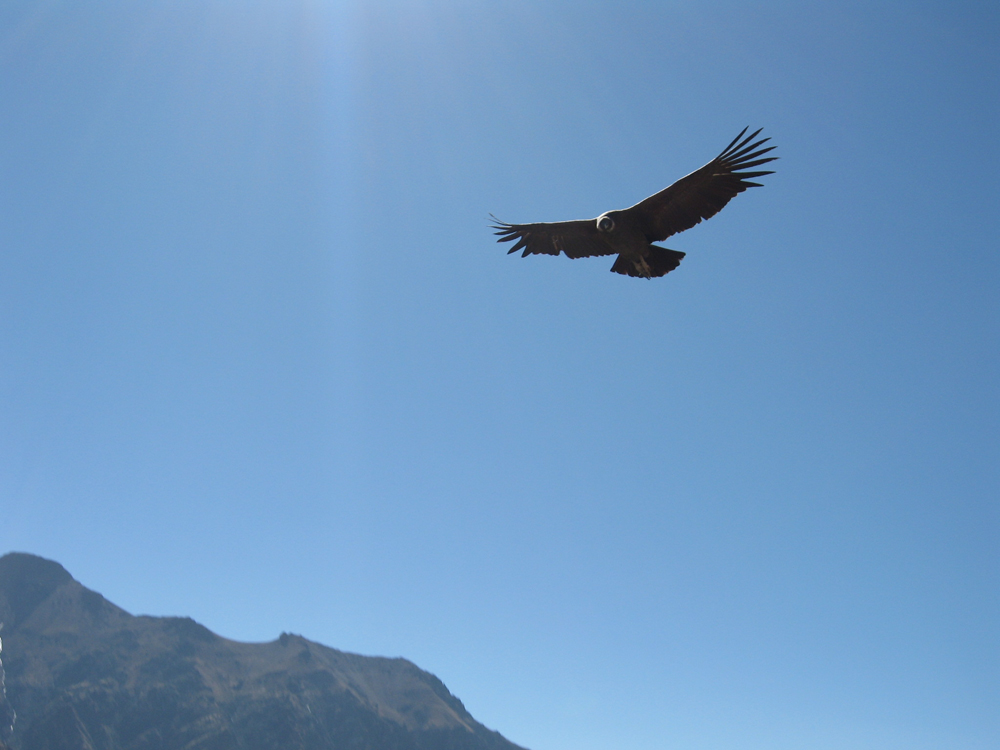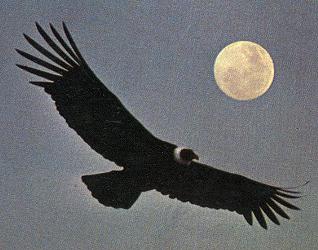|
 The
Research Foundation is developing a Condor's program of
protection because we see the need to create a Sanctuary made
suitable for these wonderful birds, because of unscrupulous
people that they use for his personal economic benefits without
any consideration that this specie is in danger of extinction.
The condor of the Andes has a wingspan of bigger wings, catching
up with the 3.5 m, while the one belonging to California does
not surpass the 2.9 m. This last one is something heavier; it
can weigh until 14 kg. The Andean male condors weigh some 11.5
kg. They have the plumage as black as soot, with a great white
zone in the wings. This locates in the superior face in the
Andean. The first one has a naked pale- red color head and males
possess in the forehead a fleshy crest striking to the eye. The
bottom part of the neck is tight-fitting for a feathery white
color ruff. These birds put an only egg in the ledges of the
rocks (Andean). The children develop very slowly, and begin to
fly the six elderly months. They eat almost exclusively putrid
flesh; although, at times, the condor of the Andes can attack
wounded animals or newborn babies. The
Research Foundation is developing a Condor's program of
protection because we see the need to create a Sanctuary made
suitable for these wonderful birds, because of unscrupulous
people that they use for his personal economic benefits without
any consideration that this specie is in danger of extinction.
The condor of the Andes has a wingspan of bigger wings, catching
up with the 3.5 m, while the one belonging to California does
not surpass the 2.9 m. This last one is something heavier; it
can weigh until 14 kg. The Andean male condors weigh some 11.5
kg. They have the plumage as black as soot, with a great white
zone in the wings. This locates in the superior face in the
Andean. The first one has a naked pale- red color head and males
possess in the forehead a fleshy crest striking to the eye. The
bottom part of the neck is tight-fitting for a feathery white
color ruff. These birds put an only egg in the ledges of the
rocks (Andean). The children develop very slowly, and begin to
fly the six elderly months. They eat almost exclusively putrid
flesh; although, at times, the condor of the Andes can attack
wounded animals or newborn babies.
 The
condor locates to lengthy of the mountainous chain of the Andes.
Sometimes, goes down to the coasts of the Pacific Ocean to the
waterfowl's colognes, to feed on of his eggs. The
condor locates to lengthy of the mountainous chain of the Andes.
Sometimes, goes down to the coasts of the Pacific Ocean to the
waterfowl's colognes, to feed on of his eggs.
Scientific classification: The
condors belong to the vulture family, member of the order
Ciconiiformes. The condor of the Andes is the specie Vultur
gryphus.
If you wish to save these families
from Andean Condors get in touch with us right now. |













